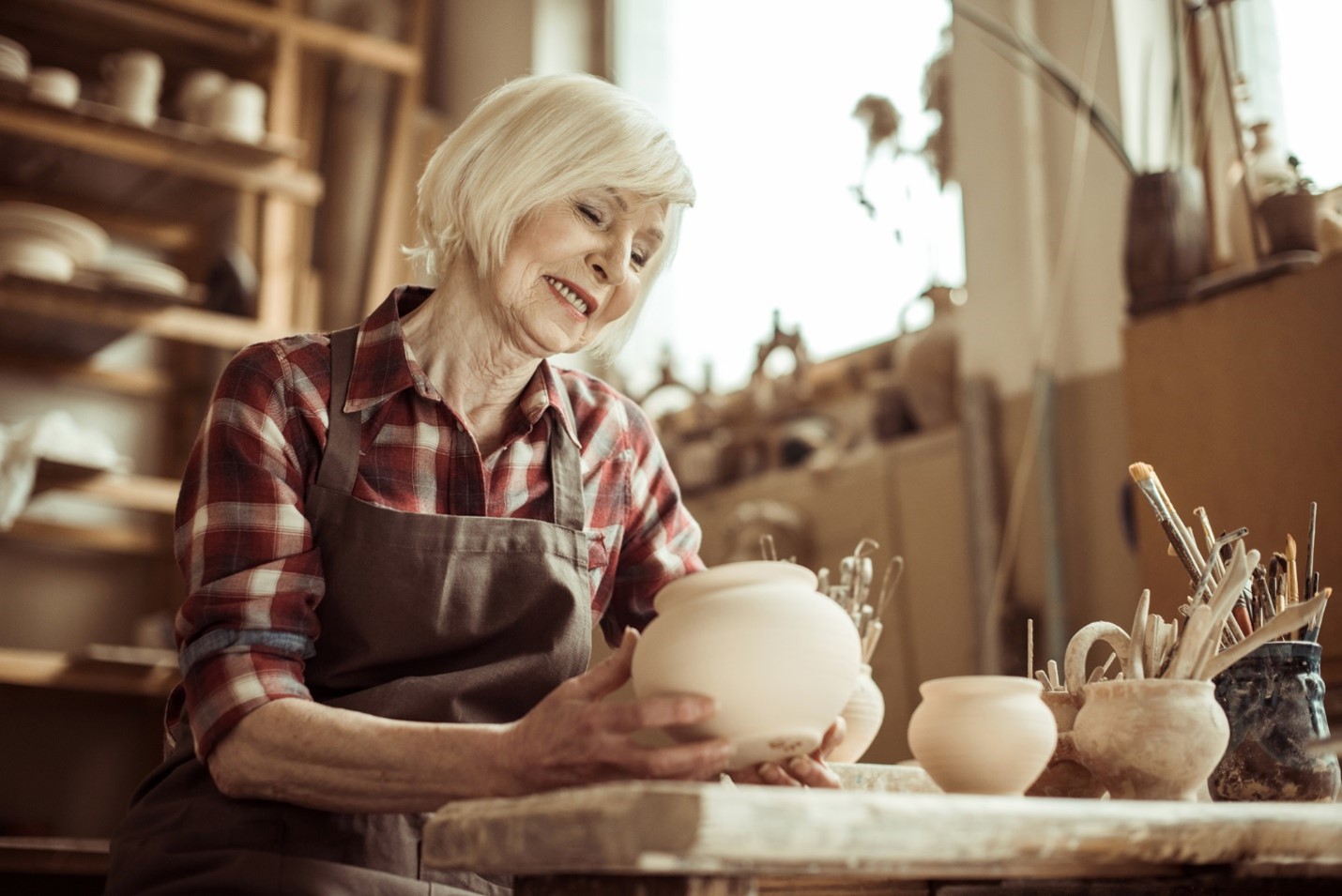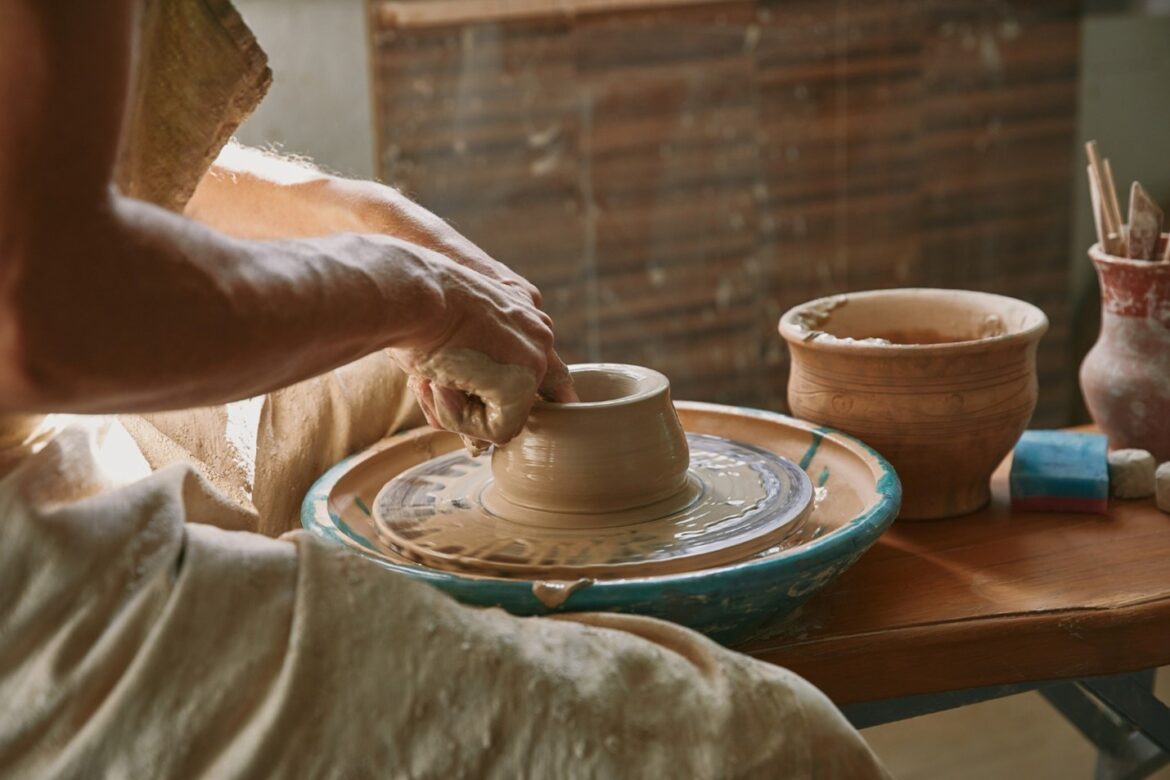Many people are now interested in an underglaze, which is essentially a way of putting décor before the pottery is covered with ceramic. These are the pigments that have oxides, and they also don’t have silica, which makes them safer for food. You can find out more about an underglaze on this page here.
Ceramic underglaze is an essential tool for any enthusiast since it is a type of colored decoration that is applied to the surface of a piece before it’s fired in the kiln. Unlike glazes, which form a protective layer on top of the clay body, underglazes remain underneath the layer, hence the name.
They also come in various forms, including liquid, powder, or pencil-like crayons, and they offer artists a wide range of colors and effects to choose from, allowing for endless creative possibilities. From vibrant hues to subtle pastels, underglazes can be used for intricate detailing or overall coverage.
For application, the artists can use brushes or even sponges depending on their desired effect. These pigments are highly versatile and can be layered or blended to create unique color variations. Once applied, the piece must be left to dry completely before applying a clear glaze over it.
During firing in the kiln, the hues undergo a chemical transformation as they fuse with the clay body beneath them. The high temperatures cause these pigments to melt slightly and become fused into the final piece which results in beautiful permanent decorations.
Using these materials requires experimentation and practice as every artist has their own preferred techniques for achieving desired results. Some may prefer multiple layers for depth, while others might opt for bold single-color designs. The secret lies in exploring different application methods and materials like the ones from Walker Ceramics, so that you can get excellent results. Below are your other options for clay.
Different Materials Used in Pottery
Earthenware Options
Individuals who talk about earthenware may refer to terracotta. It has that rich and lovely red hue that’s often found in potted plants, and the temperatures that it needs can be about 1479 to 2109-degree Fahrenheit. It has a higher content of iron oxide, so it generally emits an orange or red color. Some of them can look quite refined and smooth after they’ve been fired, and this type is often considered to be workable and soft.
It’s easier to shape, and it will keep its form afterwards. Other types may tend to return to their original shape, and they tend to slump, but this is often a good starting point for beginners.
Stoneware
These materials are often fired at a higher temperature point than earthenware. Its colors range from deep to pale gray and since it’s porous and tough, it generally makes a good plate and other dinnerware that’s often made by various manufacturers. Refined particles are also going to result in a smoother form.
Generally, it’s a material made from quartz, ball clay, and feldspar, and the fluxes on them reduce the melting point of glass-forming materials of the pots. Sometimes, fire clay is added so higher temperatures can be used when they are fired in the kiln. Find info about stoneware on this webpage: https://www.britannica.com/art/stoneware.
Tips for Beginners Using Ceramic Underglaze
Even if there are several options of clay out there, you still need to get started and have a clearer goal in mind of what you want to achieve. Piece everything properly and ensure that your material is completely dry. Clean it from debris, lint, and dust for a smoother and more even adherence.
Proper preparations can make a huge difference, and you can also consider the application of different techniques and experiment with other media. Use various tools or even your fingers to apply the underglaze onto the surface of your pottery, and keep in mind that each technique will give you a unique result, so don’t be afraid to get creative.
Apply multiple coats and wait until each layer is completely dry. Patience is something that you would want to apply, and don’t forget the schedules of the firing. Different types of clay require specific firing conditions for optimal results with ceramic underglazes, so always refer to manufacturer guidelines or consult with an experienced potter for guidance.
Resources for Learning and Improving in Ceramics

- Local Pottery Classes: Check if there are any pottery studios or art centers in your area that offer lessons since taking a hands-on approach with guidance from experienced instructors can be incredibly beneficial.
- Online Tutorials and Courses: The internet is a treasure trove of information when it comes to learning ceramics. Many websites offer video tutorials and courses that cover various aspects of pottery-making techniques, so make sure to take advantage of them.
- Books on Ceramics: There’s no shortage of books dedicated to the art of ceramics, ranging from beginner-friendly guides to more advanced texts. Explore different titles that focus on specific techniques or provide overall knowledge about the craft.
- Workshops and Retreats: Consider attending these events led by expert potters who specialize in specific techniques or styles that interest you. These immersive experiences allow for hands-on learning while surrounded by like-minded individuals.

